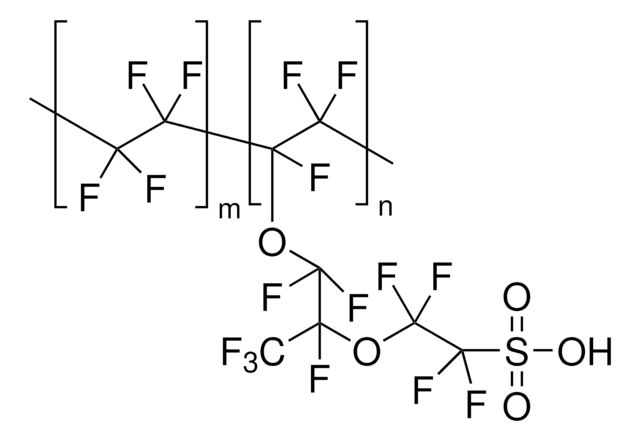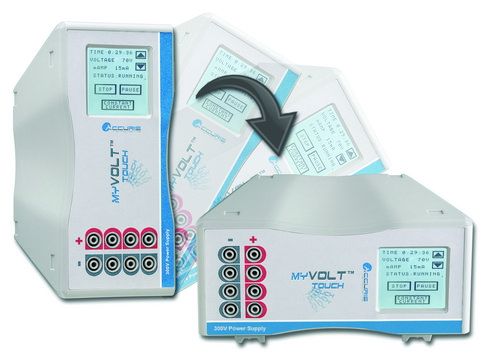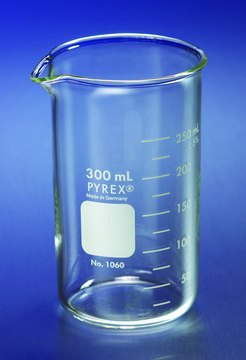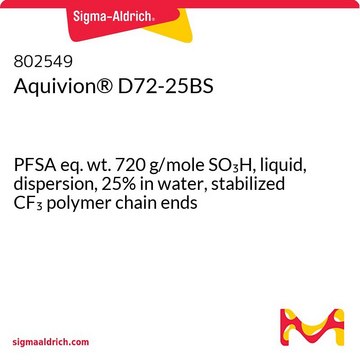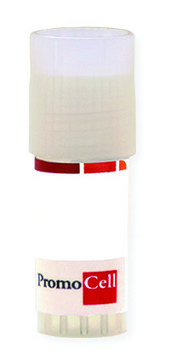Recommended Products
biological source
rat
clone
polyclonal
species reactivity
human
manufacturer/tradename
RIPAb+
Upstate®
concentration
1 mg/mL
technique(s)
RIP: suitable
immunoprecipitation (IP): suitable
western blot: suitable
NCBI accession no.
shipped in
dry ice
General description
RIPAb+ antibodies are evaluated using the RNA Binding Protein Immunoprecipitation (RIP) assay. Each RIPAb+ antibody set includes a negative control antibody to ensure specificity of the RIP reaction and is verified for the co-immunoprecipitation of RNA associated specifically with the immunoprecipitated RNA binding protein of interest. Where appropriate, the RIPAb+ set also includes quantitative RT-PCR control primers (RIP Primers) to biologically validate your IP results by successfully co-precipitating the specific RNA targets, such as messenger RNAs. The qPCR protocol and primer sequences are provided, allowing researchers to validate RIP protocols when using the antibody in their experimental context. If a target specific assay is not provided, the RIPAb+ kit is validated using an automated microfluidics-based assay by enrichment of detectable RNA over control immunoprecipitation.
STAU1 (Staufen 1) is a RNA-binding protein implicated in the transport and/or localization of mRNA via the microtubule network to the rough endoplasmic reticulum.
STAU1 (Staufen 1) is a RNA-binding protein implicated in the transport and/or localization of mRNA via the microtubule network to the rough endoplasmic reticulum.
Specificity
Other species have not yet been tested.
Immunogen
Epitope: a.a. 2-51
Synthetic peptide from amino acids 2-51 of human STAU 1.
Application
Immunoprecipitation from RIP lysate:
Representative lot data.
RIP lysate from HeLa cells (~2 X 10E7 cell equivalents per IP) were subjected to immunoprecipitation using 5 µg of either a normal rabbit IgG, (Cat. #PP64B), or 5 µg of Anti-STAU1 (Staufen 1) antibody (Cat. # CS204405). Ten percent of the precipitated proteins (lane 1: rabbit IgG, lane 2: STAU1) were resolved by electrophoresis, transferred to nitrocellulose and probed with Anti-STAU1 (Staufen 1) antibody (Cat. # CS204405, 1:1000). Proteins were visualized using One-Step IP-Western kit (GenScript Cat. # L00232) .
Arrow indicates STAU1. (Figure 2).
Western Blot Analysis:
Representative lot data.
HepG2 cell lysate was resolved by electrophoresis, transferred to PVDF membranes and probed with Anti-STAU1 antibody (Cat. # CS204405, 1:1000 dilution). Proteins were visualized using a Goat Anti-Rabbit IgG conjugated to HRP and a chemiluminescence detection system.
Arrow indicates STAU1 (~63 kDa). (Figure 3).
Note: Uncharacterized bands appear at ~22 kDa and ~53 kDa in
Representative lot data.
RIP lysate from HeLa cells (~2 X 10E7 cell equivalents per IP) were subjected to immunoprecipitation using 5 µg of either a normal rabbit IgG, (Cat. #PP64B), or 5 µg of Anti-STAU1 (Staufen 1) antibody (Cat. # CS204405). Ten percent of the precipitated proteins (lane 1: rabbit IgG, lane 2: STAU1) were resolved by electrophoresis, transferred to nitrocellulose and probed with Anti-STAU1 (Staufen 1) antibody (Cat. # CS204405, 1:1000). Proteins were visualized using One-Step IP-Western kit (GenScript Cat. # L00232) .
Arrow indicates STAU1. (Figure 2).
Western Blot Analysis:
Representative lot data.
HepG2 cell lysate was resolved by electrophoresis, transferred to PVDF membranes and probed with Anti-STAU1 antibody (Cat. # CS204405, 1:1000 dilution). Proteins were visualized using a Goat Anti-Rabbit IgG conjugated to HRP and a chemiluminescence detection system.
Arrow indicates STAU1 (~63 kDa). (Figure 3).
Note: Uncharacterized bands appear at ~22 kDa and ~53 kDa in
Research Category
Epigenetics & Nuclear Function
Epigenetics & Nuclear Function
Research Sub Category
Transcription Factors
RNA Metabolism & Binding Proteins
Transcription Factors
RNA Metabolism & Binding Proteins
Packaging
10 assays per set. Recommended use: ~5 μg of antibody per RIP (dependent upon biological context).
Quality
RNA Binding Protein Immunoprecipitation:
RIP Lysate prepared from HeLa cells (2 X 10E7 cell equivalents per IP) were subjected to immunoprecipitation using 5 µg of either a normal Rabbit IgGor 5 µg of Anti-STAU1 antibody and the Magna RIP® RNA-Binding Protein Immunoprecipitation Kit (Cat. # 17-700).
Successful immunoprecipitation of STAU1-associated RNA was verified by qPCR using RIP Primers ARF1, (Figure 1).
Please refer to the Magna RIP (Cat. # 17-700) or EZ-Magna RIP (Cat. # 17-701) protocol for experimental details.
RIP Lysate prepared from HeLa cells (2 X 10E7 cell equivalents per IP) were subjected to immunoprecipitation using 5 µg of either a normal Rabbit IgGor 5 µg of Anti-STAU1 antibody and the Magna RIP® RNA-Binding Protein Immunoprecipitation Kit (Cat. # 17-700).
Successful immunoprecipitation of STAU1-associated RNA was verified by qPCR using RIP Primers ARF1, (Figure 1).
Please refer to the Magna RIP (Cat. # 17-700) or EZ-Magna RIP (Cat. # 17-701) protocol for experimental details.
Target description
~63 kDa observed. Uncharacterized bands appear at ~22 kDa and ~53 kDa in some lysates.
Physical form
Anti-STAU1 (Staufen 1) (Rabbit Polyclonal),. Lyophilized powder. Add 50 μL of distilled water. Final antibody concentration is 1 mg/ml in PBS buffer. For longer periods of storage, store at -20°C. Avoid repeat freeze-thaw cycles.
Normal Rabbit IgG. One vial containing 125 µg of purified rabbit IgG in 125 µL of storage buffer containing 0.05% sodium azide. Store at -20°C.
RIP Primers, ARF1.
One vial containing 75 μL of 5 μM of each primer specific for human ARF1 mRNA.
Store at -20°C.
FOR: GAC CAC GAT CCT CTA CAA GC
REV: TCC CAC ACA GTG AAG CTG ATG
Normal Rabbit IgG. One vial containing 125 µg of purified rabbit IgG in 125 µL of storage buffer containing 0.05% sodium azide. Store at -20°C.
RIP Primers, ARF1.
One vial containing 75 μL of 5 μM of each primer specific for human ARF1 mRNA.
Store at -20°C.
FOR: GAC CAC GAT CCT CTA CAA GC
REV: TCC CAC ACA GTG AAG CTG ATG
Format: Purified
Storage and Stability
Stable for 1 year at -20°C from date of receipt.
Handling Recommendations: Upon receipt, and prior to removing the cap, centrifuge the vial and gently mix the solution. Aliquot into microcentrifuge tubes and store at -20°C. Avoid repeated freeze/thaw cycles, which may damage IgG and affect product performance.
Handling Recommendations: Upon receipt, and prior to removing the cap, centrifuge the vial and gently mix the solution. Aliquot into microcentrifuge tubes and store at -20°C. Avoid repeated freeze/thaw cycles, which may damage IgG and affect product performance.
Analysis Note
Control
Includes negative control normal rabbit IgG antibody and control primers specific for the human ARF1 mRNA.
Includes negative control normal rabbit IgG antibody and control primers specific for the human ARF1 mRNA.
Legal Information
MAGNA RIP is a registered trademark of Merck KGaA, Darmstadt, Germany
UPSTATE is a registered trademark of Merck KGaA, Darmstadt, Germany
Disclaimer
Unless otherwise stated in our catalog or other company documentation accompanying the product(s), our products are intended for research use only and are not to be used for any other purpose, which includes but is not limited to, unauthorized commercial uses, in vitro diagnostic uses, ex vivo or in vivo therapeutic uses or any type of consumption or application to humans or animals.
Storage Class Code
10-13 - German Storage Class 10 to 13
Certificates of Analysis (COA)
Search for Certificates of Analysis (COA) by entering the products Lot/Batch Number. Lot and Batch Numbers can be found on a product’s label following the words ‘Lot’ or ‘Batch’.
Already Own This Product?
Find documentation for the products that you have recently purchased in the Document Library.
Eryn E Dixon et al.
Journal of the American Society of Nephrology : JASN, 33(2), 279-289 (2021-12-03)
Single-cell sequencing technologies have advanced our understanding of kidney biology and disease, but the loss of spatial information in these datasets hinders our interpretation of intercellular communication networks and regional gene expression patterns. New spatial transcriptomic sequencing platforms make it
Yoshiharu Muto et al.
Nature communications, 13(1), 6497-6497 (2022-11-01)
Autosomal dominant polycystic kidney disease (ADPKD) is the leading genetic cause of end stage renal disease characterized by progressive expansion of kidney cysts. To better understand the cell types and states driving ADPKD progression, we analyze eight ADPKD and five
Julia Reifenberger et al.
International journal of cancer, 100(5), 549-556 (2002-07-19)
Aberrant activation of the Wnt signaling pathway has been reported in different human tumor types, including malignant melanomas. We investigated 37 malignant melanomas (15 primary tumors and 22 metastases) for alterations of 4 genes encoding members of this pathway, i.e.
T-P Xu et al.
Oncogene, 34(45), 5648-5661 (2015-03-03)
The long noncoding RNA TINCR shows aberrant expression in human squamous carcinomas. However, its expression and function in gastric cancer remain unclear. We report that TINCR is strongly upregulated in human gastric carcinoma (GC), where it was found to contribute
Tong-Peng Xu et al.
Cell death & disease, 8(6), e2837-e2837 (2017-06-02)
Recent evidence indicates that E2F1 transcription factor have pivotal roles in the regulation of cellular processes, and is found to be dysregulated in a variety of cancers. Long non-coding RNAs (lncRNAs) are also reported to exert important effect on tumorigenesis.
Our team of scientists has experience in all areas of research including Life Science, Material Science, Chemical Synthesis, Chromatography, Analytical and many others.
Contact Technical Service